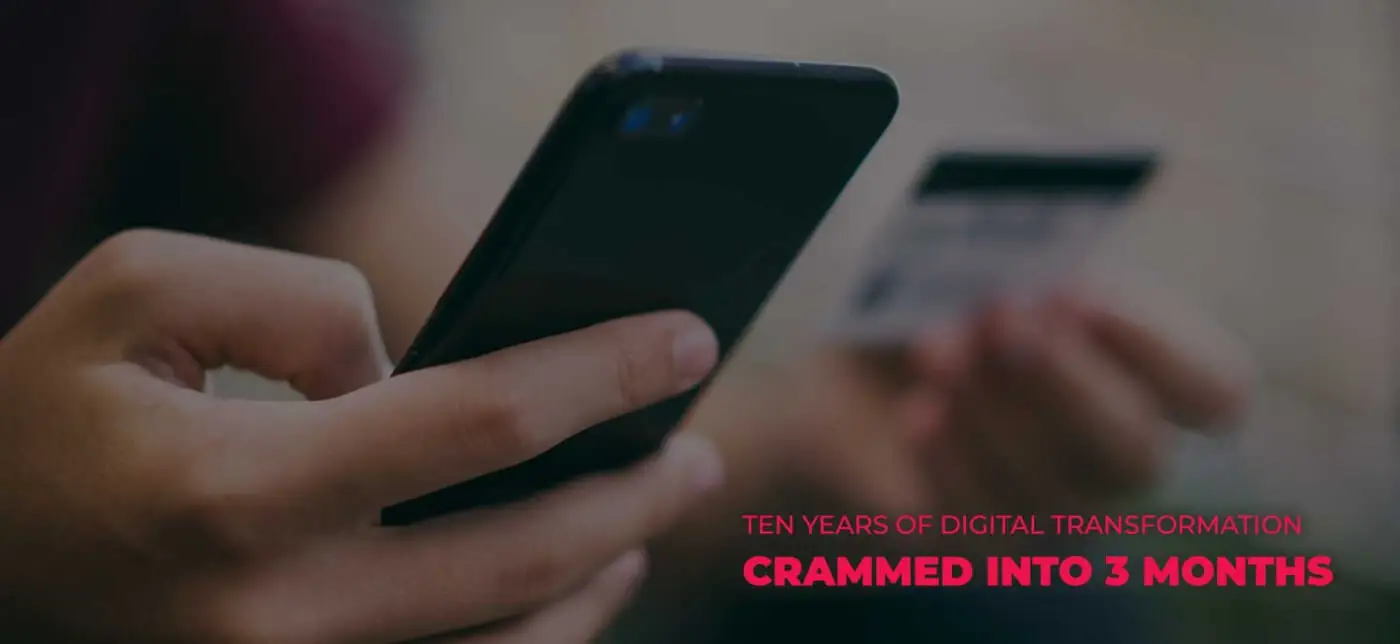Keep pace with the rapidly evolving fintech industry by subscribing to the BIGcast Network. Get weekly insights from industry leaders John Best and Glen Sarvady, delivered straight to your preferred podcast platform. Join our community and stay informed about the latest trends shaping the credit union industry. Subscribe today and ensure you’re always ahead of the curve.

Ten Years of Transformation Crammed into Three Months
In the big picture, it’s not as if any of this was a surprise. We’ve known for ages that digital channels were the future of banking, and that credit unions- especially smaller ones- needed to upgrade their tech platforms or risk being left behind. As long as progress toward that new world proceeded at a snail’s pace, though, it was easy enough for many of us to pay it lip service and continue with our everyday lives.
Enter COVID-19. Suddenly that slow and steady transition kicked into overdrive as branches were temporarily shuttered and credit unions scrambled to engage remotely with their members. Even drive-through teller routines had to be reinvented- often involving masked staff approaching the car window, tablet in hand, to keep lines moving smoothly. Internally, CUs quickly discovered the conventional wisdom that financial services call centers are a poor fit for Work from Home models was little more than an urban legend.
In many ways, we’ve crammed ten years of digital transformation into the past three months. And we’ve done a remarkable job keeping the machine humming along- proving yet again the power of American ingenuity. So what’s next? Leaders across all business sectors are thankfully reaching the realization we’re not about to wake up from a dream and continue from where we left off in February. Credit union executives have earned a short summer breather after a mad dash to reshape their structures on the fly. But recharge quickly- now comes the push to reinforce those structures for the long haul.
Will there be some reversion to old banking behaviors once branches fully reopen? Sure- but no one should expect the clock to turn all the way back. An entirely new segment of members has now been trained on digital solutions- including the supposedly “technology-averse” older demographic that also doubles as COVID’s highest risk group- and by most measures are fine with them. Our challenge is to tailor a go-forward model that combines digital banking’s potential- there’s no reason the friendliest solutions should be synonymous with the biggest banks- while preserving the personal relationships that are credit unions’ longtime differentiator.
As The Financial Brand’s Jim Marous said on a recent CU Digital Town Hall, we’re about to find out which FIs have been “faking digital.” By this he means offering an account opening process that still requires an applicant to visit the branch, or a digital experience no more streamlined than a customer would encounter onsite. Credit unions have performed impressively through COVID-19’s first wave, and I suspect there are very few stragglers left who question the importance of digital to their CU’s future. Now is the time to weave it tightly into the fabric of the go-forward platform and culture.
